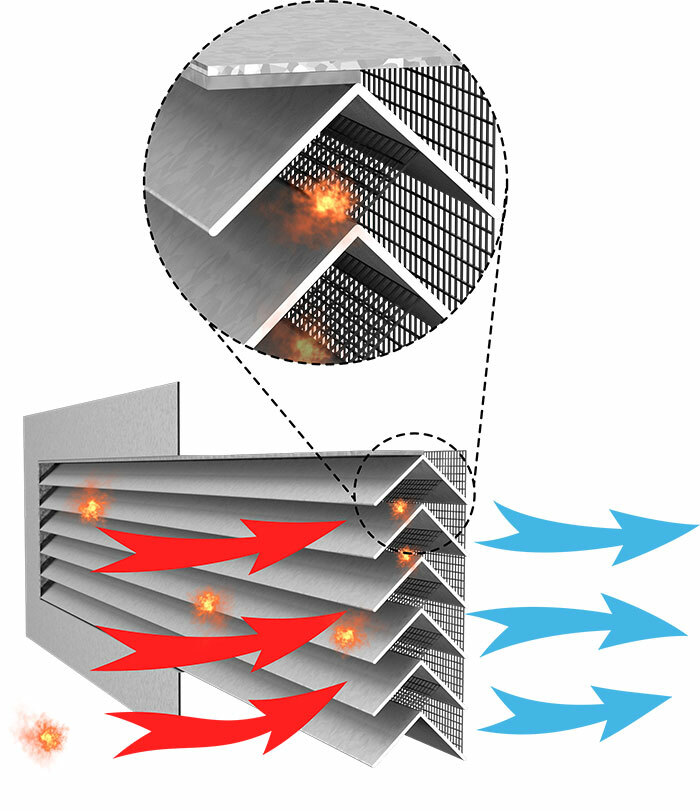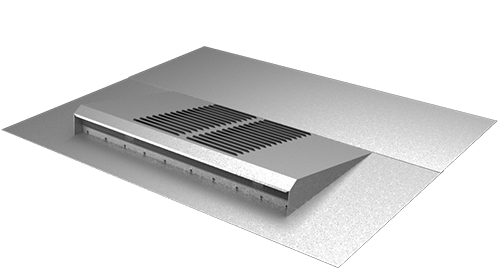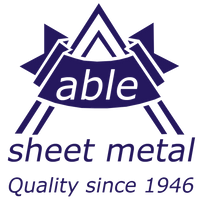The National Interagency Coordination Center reports that the 2020 wildfire season resulted in over 10 million acres of land being burned in the United States, causing tragic human loss and substantial property damage. A significant portion of the damage and loss of life occurred in what is known as the Wildland-Urban Interface. These are areas where residential, commercial, and other human developments meet or intermingle with wildland vegetation, such as forests, grasslands, or other natural areas. As more people build homes in WUI areas, the risk of wildfires reaching and damaging these properties increases. One meaningful way to protect houses from wildfire destruction is by installing WUI vents.
High-quality WUI vents help homes and buildings in WUI areas by venting embers and flames to reduce pressure building. WUI vents reduce the risks to both property and lives, by preventing burning ember intrusion.

Wildfire Statistics Table:
The National Interagency Fire Center (NIFC) provides wildfire statistics from the previous five years in the United States. Millions of acres in WUI areas are burned every year, so it is very important to install WUI vents in structures at risk in such areas.
| Year | Acres Burned | Number of Fires |
| 2018 | 8,582,609 | 55,911 |
| 2019 | 4,630,007 | 49,786 |
| 2020 | 10,274,679 | 58,258 |
| 2021 | 7,139,713 | 58,733 |
| 2022 | 7,534,403 | 66,255 |
| 2023 | 2,633,636 | 55,571 |
What are WUI Vents?
WUI vents are special vents designed to prevent elements of wildfires from spreading into homes. According to wildfire experts at the Insurance Institute for Business & Home Safety (IBHS), windblown embers are a major cause of homes catching fire during wildfires. WUI vents help stop these burning embers from entering houses through vents, eaves, and soffits.
How Do WUI Vents Work?
WUI vents are installed on the exterior of homes, covering openings that lead into attics and wall spaces. They have a mesh or screen that lets air flow through but blocks embers and sparks. This simple yet effective design prevents burning materials from getting inside the home, where they could ignite fires. By installing WUI vents, homeowners living near wildfire-prone areas can greatly reduce their risk of losing their house to a wildfire. These vents provide crucial protection.

Why You Need WUI Vents for Buildings in Wildfire Areas
Here are the key benefits of using WUI vents:

Better Air Flow
WUI vents allow air to flow freely in and out of your building. This helps prevent heat and smoke from building up inside during a wildfire.
Increased Fire Safety
The main purpose of WUI vents is to make buildings safer in wildfires. They are designed to block embers and flames from entering, boosting the structure's fire resistance and protecting people inside.
Meeting Safety Rules
If you live in a wildfire-prone area, you may need to follow WUI building codes. Installing approved WUI vents helps ensure your building meets all required safety standards.
Protecting Nature
Wildfires don't just threaten buildings—they can also harm forests, parks, and wildlife. By reducing fire spread, WUI vents help to safeguard natural areas near urban zones. This preserves local ecosystems and habitats.
Contribution to Community Safety
By implementing fire-resistive features, owners protect their property and become part of a resilient and fire-adapted community. The application of WUI vents is an extremely important part of a multidimensional approach to reducing wildfire threats and ensuring the safety of a community.
Regulations and Standards for WUI Vents
California is the first state to mandate WUI vent requirements. However, national and international standardizations are also being made to guarantee the safety and reliability of these crucial elements. The ASTM has made significant efforts to develop WUI vent standards and testing procedures for authorized organizations.
MGV style WUI Compliant Vents
Able Sheet Metal designed vents are made to guard structures from the intrusion of fire and prevent the spreading of fire. These ventilating systems are manufactured from fire-resistant materials, and are specifically made to prevent small embers and sparks from entering the attic area through ventilation openings. Below are a few styles of WUI-compliant patented vents:
FIRE RESISTANT MULTI-GUARD LOUVER VENTS (MGV)
Fire Resistant Multi-Guard Louver Vents (MGV) are a critical part of securing buildings in wildfire-prone areas. Patented MGV style louvers are designed to match the usual 2” depth standard of louver vents. They are equipped with 1/16” galvanized steel mesh on the back, an internal filtration system, and intumescent elements for a critical temperature environment.
Here is an overview of the benefits and performance of the special vents:

MGV Vent Benefits
MGV vents are considered to be the most fire resistant, as they come with technology that helps to address the fire risk associated with wildfires.
- Improved Fire Resistance: These vents can endure high temperatures and incoming embers, which reduces the chance of buildings being penetrated by fire.
- Perfect Air Flow Management: MGV vents facilitate ventilation efficiently by supporting permanent airflow and preventing the entrance of burning particles, heat and flames for protection of the building.
- Durability and Longevity: Made of first-class, fireproof materials, MGV vents withstand all kinds of fire hazards. They are also designed to be fireproof in conjunction with the rest of the building.
- Ember Guard Protection: MGV vents are equipped with ember guards that act as barriers against airborne particles, a common cause of structure ignitions during wildfires.

Learn More about the FIRE RESISTANT MULTI-GUARD LOUVER VENTS (MGV)
FIRE RESISTANT MULTI-GUARD SOFFIT VENTS (MGV)
Multi-Guard Soffit Vents (MGV) support permanent airflow and block burning embers, direct heat and flames from spreading into the building. Made from non-combustive materials, they drastically lower the risk of fire spreading through the soffit, eave, and foundation areas of a building.
Patented MGV style soffit vents match the usual 1" standard depth of soffit/eave/foundation vents, equipped with 1/16" galvanized mesh on the back, internal filtration system, and intumescent elements for critical temperature environments.
Benefits of MULTI-GUARD SOFFIT VENTS
- Improved Fire Resistance: These vents can endure high temperatures and incoming flying embers/particles, which reduces the chance of buildings being penetrated by fire.
- Exceptional Air Flow Factor: MGV products facilitate one of the best ventilation efficiencies by acting as a solid guard against radiant heat and flying burning particles, ensuring a stable indoor environment. If the surrounding temperature goes above specified readings, the intumescent elements expand to block the air supply to the endangered area and help extinguish burnings particles.
- Durability and Longevity: Made of non-combustive high-profile materials, MGV vents withstand fire hazards. They are also designed to work with the rest of the building's fire-resistant elements.
- Ember Guard Protection: MGV vents are equipped with unique patented filtrating ember guards that act as a barrier against airborne embers, a common cause of structure ignitions during wildfires.


LEARN MORE about the FIRE RESISTANT MULTI-GUARD LOUVER VENTS (MGV-L)
LEARN MORE about the FIRE RESISTANT MULTI-GUARD SOFFIT VENTS (MGV-S)
MGV-S MODELS SPECIFICATIONS
| Product Name | .dwg file | .skp file | .pdf file |
| Soffit Vent 3x14 MGV WUI | Download | Download | Download |
| Soffit Vent 3x18 MGV WUI | Download | Download | Download |
| Soffit Vent 3x20 MGV WUI | Download | Download | Download |
| Soffit Vent with Hinge MGV WUI | Download | Download | Download |
The above product styles are tested to match ASTM E2886 and multiple other standards and are listed by Cal Fire as WUI compliant. The installation recommendations for MGVs are described in the attached “Installation Guide”. They are produced with Stucco Flange (SF), Flange On Front (FOF), Flange On Back (FOB), New-Wall Flange (NWF), and Retrofit Flange (RF).
GLIDER VENTS
These are low-profile roof vents essential for proper ventilation of buildings, including those situated in WUI designated areas. The patented design contains additional louvers on the top that provide exceptional airflow, an internal divider to prevent direct access of external air and particles into the attic area, metal mesh guards on the front and base of the vent to prevent bird and pest invasion, and a stretched forward front flange to prevent possible wind-driven back-flow. The FireShield vent is tested to ASTM E2912-17 horizontal fire resistance. Optionally, it can be equipped with a WUI-listed Multi-Guard Vent (MGV) on the base level.

Benefits of Glider Vents:
- Better Air Circulation: Glider vents provide controlled air movement through the construction and can be used for intake as well as exhaust, supporting complete attic ventilation.
- The patented design prevents particles from outside (including flying embers) from directly accessing the building's attic area. The front end is made to avoid birds nesting under the vent's top, and the extended front flange prevents the backflow of wind-driven water from accessing the attic.
- Reliable handling of stormy weather - Passed Miami Dade County (FL) Wind and Rain resistance testing.
- Thermal Regulation: These vents help regulate the temperature in a building by curbing the heat's impact on the construction.

Learn More about the Glider Vents
GLIDER VENTS SPECIFICATIONS
| Product Name | .dwg file | .skp file | .pdf file |
| Glider Vents Standard Shake | Download | Download | Download |
| Half Round Dormer | Download | Download | Download |
| Half Round Dormer Sub-Base MGV | Download | Download | Download |
CONCLUSION
With more than 40 million acres of land burnt within six years and severe personal and property damages in disastrous wildfires, the necessity for WUI regulations and compliant vents as a method of controlling wildfire spread is evident. For those who reside in wildland-urban interface regions, having WUI vents can greatly minimize the risk of their houses being ignited by embers.

